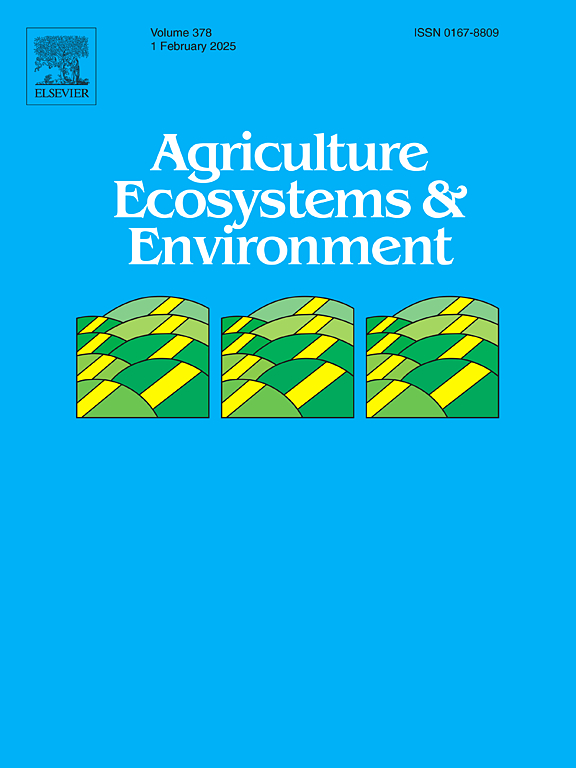影响新斯科舍省野生蓝莓田杂草群落的生态过程
IF 6.4
1区 农林科学
Q1 AGRICULTURE, MULTIDISCIPLINARY
引用次数: 0
摘要
众所周知,生态梯度和过程在决定农业生态系统中杂草群落组成方面起着关键作用。本研究探讨了气候、地形和土壤因素是否与野生蓝莓地杂草种类的发生和丰度有关。对加拿大新斯科舍省的165个野生蓝莓地进行了植物调查,并结合了从联邦数据库收集的气候、地形和土壤地理数据。采用线性混合模型和多变量分析方法对野生蓝莓地杂草发生、种间相互作用和环境协变量之间的关系进行了分析。田间周边杂草物种多样性与野生蓝莓茎密度的相关性最强,无论杂草密度如何,物种丰富度的增加都会导致茎密度的降低。杂草多样性受累积生长日数、地形位置指数和地形湿度指数的影响。许多常见杂草种类的发生和丰度与野生蓝莓和累积生长度数呈正相关。然而,基于生态位的组合规则对野生蓝莓地杂草种类组成的相对重要性是最小的。然而,一些物种与环境辅助因子高度相关。这些结果强调了局部随机性和种间相互作用在确定野生蓝莓地杂草群落中的重要性,以及在多年生农业生态系统中预测杂草群落的挑战。本文章由计算机程序翻译,如有差异,请以英文原文为准。
Ecological processes affecting weed communities in Nova Scotian wild blueberry fields
Ecological gradients and processes are known to play a key role in determining weed community composition in agroecosystems. The present study investigated whether climatic, topographical, and soil edaphic factors were associated with weed species occurrences and abundances in wild blueberry fields. A plant survey of 165 wild blueberry fields in the Canadian province of Nova Scotia was conducted and combined with climatic, topographical, and soil edaphic data collected from Federal databases. Linear mixed models and multivariate analyses were used to disentangle the relationship between weed species occurrences, species-species interactions, and environmental covariates in wild blueberry fields. The surrounding weed species diversity in fields had the strongest association with wild blueberry stem density with increasing species richness driving a decrease in stem density regardless of weed density. Weed diversity was affected by accumulated growing degree days, topographical position index, and topographical wetness index. The occurrence and abundance of many common weed species was positively associated with wild blueberry and accumulated growing degree days. The relative importance of niche-based assembly rules for overall weed species composition in wild blueberry fields, however, was minimal. Yet several species showed high correlation with environmental cofactors. These results stress the importance of local stochasticity and species-species interactions in determining weed communities in wild blueberry fields and the challenge with predicting weed communities in perennial agroecosystems.
求助全文
通过发布文献求助,成功后即可免费获取论文全文。
去求助
来源期刊

Agriculture, Ecosystems & Environment
环境科学-环境科学
CiteScore
11.70
自引率
9.10%
发文量
392
审稿时长
26 days
期刊介绍:
Agriculture, Ecosystems and Environment publishes scientific articles dealing with the interface between agroecosystems and the natural environment, specifically how agriculture influences the environment and how changes in that environment impact agroecosystems. Preference is given to papers from experimental and observational research at the field, system or landscape level, from studies that enhance our understanding of processes using data-based biophysical modelling, and papers that bridge scientific disciplines and integrate knowledge. All papers should be placed in an international or wide comparative context.
 求助内容:
求助内容: 应助结果提醒方式:
应助结果提醒方式:


